This post is part of the B2B Retention Handbook series. To explore more challenges and solutions, check out the series here.
An essential part of creating long-term relationships with customers is based on them feeling like you show up in ways that are important to them. When their work is blocked because of an issue with your product, acknowledging and working to support them in a timely manner is a strong method to showing that you are empathetic to their needs.
There are a variety of ways you can use quantitative and qualitative data to get better response times and underline just how important their success is to your team.
Outline
Reasons
This challenge is related to it being too hard for customers to get answers and provide feedback. You may have communications channels set up, but if your team doesn’t respond quickly and effectively, that’s still a poor customer experience. There could be multiple reasons for slow or ineffective response:
- Your team isn’t available when customers reach out, for example during non-working hours or holidays.
- Your team is busy doing other things, such as product support, and can’t drop what they’re doing to respond.
- Your team is available, but they don’t know the answers to customer questions and they need to ask an expert before they can respond.
- The answer to a customer question is complicated and requires some time to find the correct answer.
- You have a policy to always have customers submit a support ticket which goes into a queue and will be answered when an appropriate rep is available, which can take hours, or even days.
- You adhere to a strict work policy that means no one is available during your local (office) off-hours, and customers are directed to a knowledge base or FAQ page for answers, or they are automatically entered into a chatbot dialogue to find answers that may not solve their problem.
Solutions
- Design, plan, and execute an integrated Customer Support and Customer Success program and team, and dedicate budget and resources to fulfill the plan. - An Extensive Guide for Building Your First Great Customer Success Team | Brett Queener
- Prioritize product and customer engagement training for all customer-facing professionals. Enable each person to respond effectively to all common customer questions and to know where/who to find answers to account-specific or technically challenging questions. - The Essential Guide to Product-Driven Customer Success | Gainsight
- Set up a global response plan that affords 24/7 live chat, email, and phone response for your customers. Consider hiring and training qualified reps in every region where the majority of your customers reside. Consider outsourcing this capability if direct hiring is not practical. - What is 24/7 support? | Zendesk
- Ask your customers how you can improve their experience and continuously strive to implement improvements that reduce friction. - What Does It Mean to Offer a Frictionless Customer Experience? | HubSpot
- Track and analyze key customer engagement metrics, and strive to continuously improve them, for example:
- Ticket response time
- Ticket response satisfaction
- Number of issues
- Number of issues resolved
- Issue resolution satisfaction - 15 Top Customer Service Metrics That You Should Be Using | Freshworks



.png)
.png)
.png)
.png)